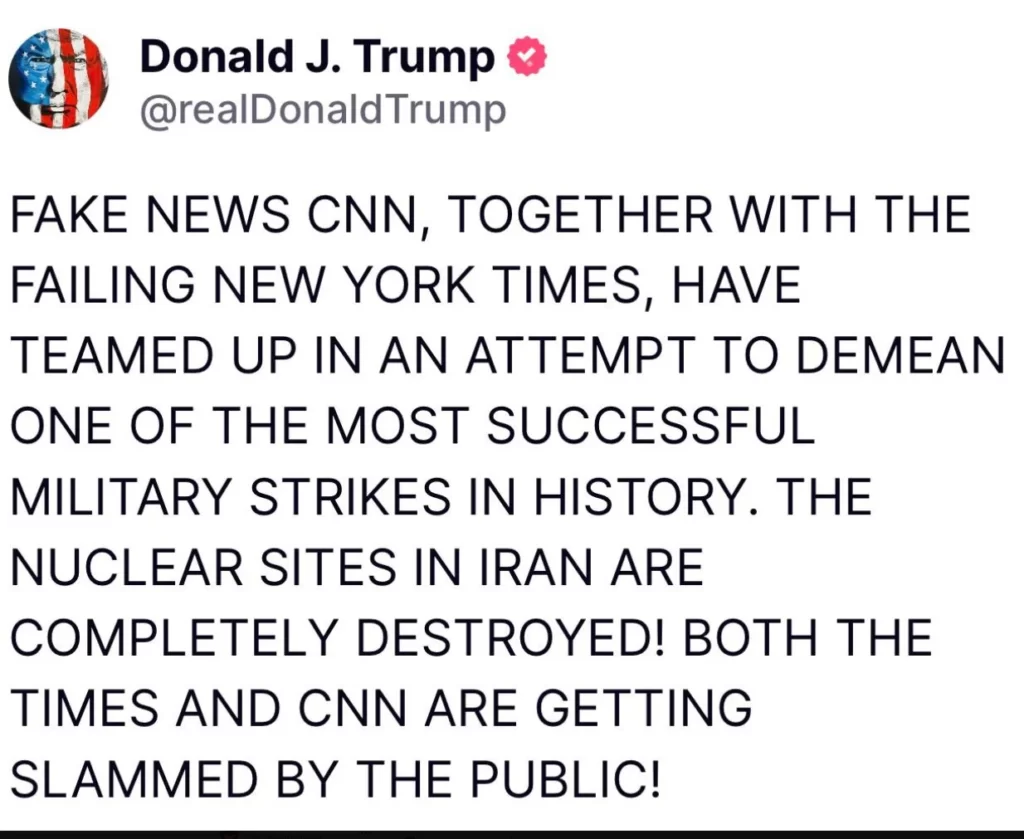As tensions between Israel, Iran, and the United States remain high, a growing body of evidence suggests that recent US airstrikes on Iranian nuclear sites did not deliver the full destruction claimed by Washington. According to a leaked early assessment by the US Defence Intelligence Agency (DIA), the strikes likely set back Iran’s nuclear programme by months, not years, and failed to destroy the core components.
What the strikes targeted
The US military operation, which followed days of coordinated Israeli attacks, targeted three major nuclear sites:
- Fordow Fuel Enrichment Plant
- Natanz Enrichment Complex
- Isfahan Nuclear Research Centre
These sites house advanced centrifuges and stores of highly enriched uranium, much of which, according to the assessment, was likely moved before the strikes occurred. The strikes – conducted using Massive Ordnance Penetrators and Tomahawk missiles- primarily destroyed aboveground infrastructure, including power facilities and ancillary buildings. The underground bunkers, however, appear to have remained largely intact.
The politics of obliteration
Despite these findings, both Donald Trump and Defence Secretary Pete Hegseth have publicly insisted the strikes “obliterated” Iran’s nuclear capability. In a post from the NATO summit in the Netherlands, Trump called it “one of the most successful military strikes in history,” insisting the sites were “completely destroyed.”
The White House dismissed the intelligence assessment, calling it a leak by a “low-level loser” and accusing critics of trying to discredit the mission and its pilots.
Despite the president’s characteristic hyperbole, senior defence officials and intelligence experts have been more cautious. Chairman of the Joint Chiefs of Staff Dan Caine said it was “way too early” to assess the long-term impact, and weapons analysts reviewing satellite imagery have echoed the DIA’s view: the programme has been damaged, not dismantled.

Can Iran rebuild?
Experts warn that Iran’s underground facilities, particularly at Fordow, Isfahan, and Parchin, are designed for resilience. Weapons analyst Jeffrey Lewis noted that these sites could serve as a rapid foundation for reconstitution, and may have already survived worse.
Additionally, some suspected facilities were never targeted, and may remain operational- a key concern, as Iran has a history of dispersing sensitive assets.
Israeli vs US assessments
Israel, which pushed for US involvement due to a lack of sufficient munitions, also reportedly overestimated the potential damage. Initial Israeli assessments show less damage at Fordow than anticipated. However, Israeli officials maintain that the joint strikes have set Iran back by two years, assuming no further development is permitted- an assumption Israel itself intends to enforce.
Ceasefire, but at what cost?
The ceasefire declared earlier this week may have brought a pause to hostilities, but the strategic outcome remains murky. Trump cancelled a planned classified briefing for House members on the strike, sparking accusations that the White House is trying to avoid scrutiny.
Democratic Congressman Pat Ryan suggested the delay was politically motivated:
“Trump just cancelled a classified House briefing on the Iran strikes with zero explanation. His team knows they can’t back up his bluster.”
Meanwhile, both the Senate and House briefings have been postponed, with no clear timetable for rescheduling.
The bottom line
Despite public claims of total success, early US intelligence paints a far more nuanced picture. Iran’s nuclear capability- and their nuclear sites- may have been damaged, but not destroyed. As the dust settles, the wider question looms: was the strike strategic or symbolic?
Source: CNN
Also read: Israel–Iran tensions: what you need to know
For more videos and updates, check out our YouTube channel.


